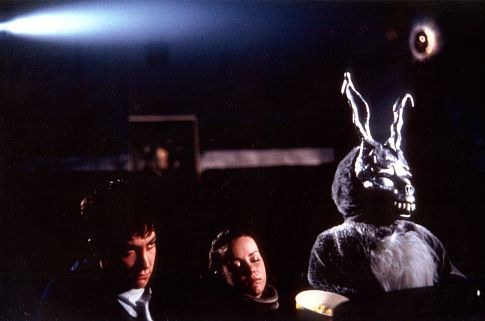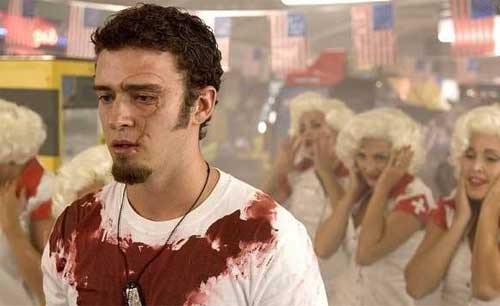Director: Spike Lee
Released: 1986
Starring: Tracy
Camilla Johns, Redmond Hicks, John Canada Terrell, Spike Lee, Raye
Dowell
Plot: Nola Darling
is simultaneously dating three different men at the same time and
while they all know about each other, they all want her to commit to
them solely only Nola doesn’t want to be “owned” by any one
partner.
Review: Despite
being one of the key directors of the early independent cinema scene
with Jim Jarmusch’s “Stranger Than Paradise” and this film
could certainly be linked as kickstaring the Independent cinema
scene. Spike Lee has always been a director whose work I’ve seen
very little of, they why of this situation could be narrowed down down to a handful of
reasons while Lee has continued to be as talked about for his
comments on various aspects of society including an ongoing dispute
with Quentin Tarantino as his films. However putting that aside and
focusing solely on his work as a director he still remains a highly
acclaimed director, especially for his early films and for this
reason I felt it was time that I dealt with this missing section of
my film studies more
The first full
length feature film to be directed by lee three years after his debut
“Joe’s Bed-Stuy Barbershop: We Cut Heads”. Here Lee shuns the
typical potrayal of young black men as pimps and gangsters but
believable everyday people with Nola’s lovers each being created to
represent a different aspect and social level of society. It’s a
world that he introduces via a series of photographs showcasing the
local colour as we see pictures of residents, buildings and graffiti
before we are introduced to Nola.
With this film the
camera not serves to observe the interactions of the small group of
characters but also serves as an almost confessional device for the
characters as they frequently break the forth wall to give their side
of the story which inturn equally serves to perfectly encapsulate
each of the character personalities. Nola is unquestionably the
strongest of these voices as a fiercely independent young woman who
sees no issues of having multiple lovers especially when each of her
three lovers gives her something different that she wants. At the
same time Lee is refuses to have Nola portrayed as being a slut even
driving home the point when Nola is sent by the dominating Greer to a
doctor after he accuses her of being a nymphomaniac only to be
reassured by the doctor that there is rightfully nothing wrong with
her behaviour.
Nola’s lovers as I
mentioned already are certainly a mixed bunch as we have the polite
gentleman Jamie (Hicks), the self-obsessed and dominating model Greer
(Terrell) and the motor mouthed street punk Mars (Lee). Each lover is
introduced talking to the camera about how they feel about Nola and
what they get from their relationship with her. While at first it
might seem like they don’t know about each other as the film goes
on it becomes much clearer that they are actually aware of the other
men and there a strange fascination to be found in how she dates each
of them as she fools around with Mars laughing and joking while
dressing up for expensive diners with Greer.
Each of the guys is
memorable in their own way with Jamie coming across as educated only
wanting to make Nola happy, even if its at the cost of pushing his
more traditional world view. Greer meanwhile is his polar opposite as
he is a self centred and sees Nola as his property and who through
her association with him makes her better. That being said he is a
flawed character himself as seen during his sex scene with Nola which
is teased out by him slowly and maticulously removing and folding
each piece of clothing while she waits in bed, watching him and
slowly losing her patience.
Mars is arguably the
most memorable of the trio while also played by Spike Lee himself
seemingly channelling Public Enemy’s Flavor Flav is everybit the
oddball from the moment his is introduced charging at the camera on
his bicycle before unleashing his motormouth style of dialogue on the
audience. His character would following the release of the film go on
to be a pop culture icon for a short period as Lee carried him across
to a series Nike Air Jordan commercials he would direct and appear in
with Michael Jordan in turn cementing his pop culture status.
Shot in black and
white reminiscent of both “Clerks” and “Slacker” this film
equally plays similar to those film in that this is a film driven by
its dialogue and its characters interactions shooting on small sets
as well as on streets and more keyly the park of Fort Greene,
Brooklyn. Despite this Lee truly crafts a full world for his
characters to inhabit despite his limitations. At the same time he
constantly mixes things up just when we think we have things worked
out as seen by the film suddenly switching to glorious technicolor
for the dance sequence or randomly cutting away to a montage of young
black men sharing their best pick up lines in a scene which is as
humorous as it is cringe worthy especially when you have one of these
guys thinking that lines such as “Baby, you’re so fine, I’d
drink a tub of your bath water.” as a flattering pick up line.
A film which is as
equally driven by its humorous elements as its character
interactions, while even now it still remains a relevant film and a
strong start to Lee’s lengthy career as a director, leaving me keen
to see what else I’ve been missing in his filmography.






















No comments:
Post a Comment